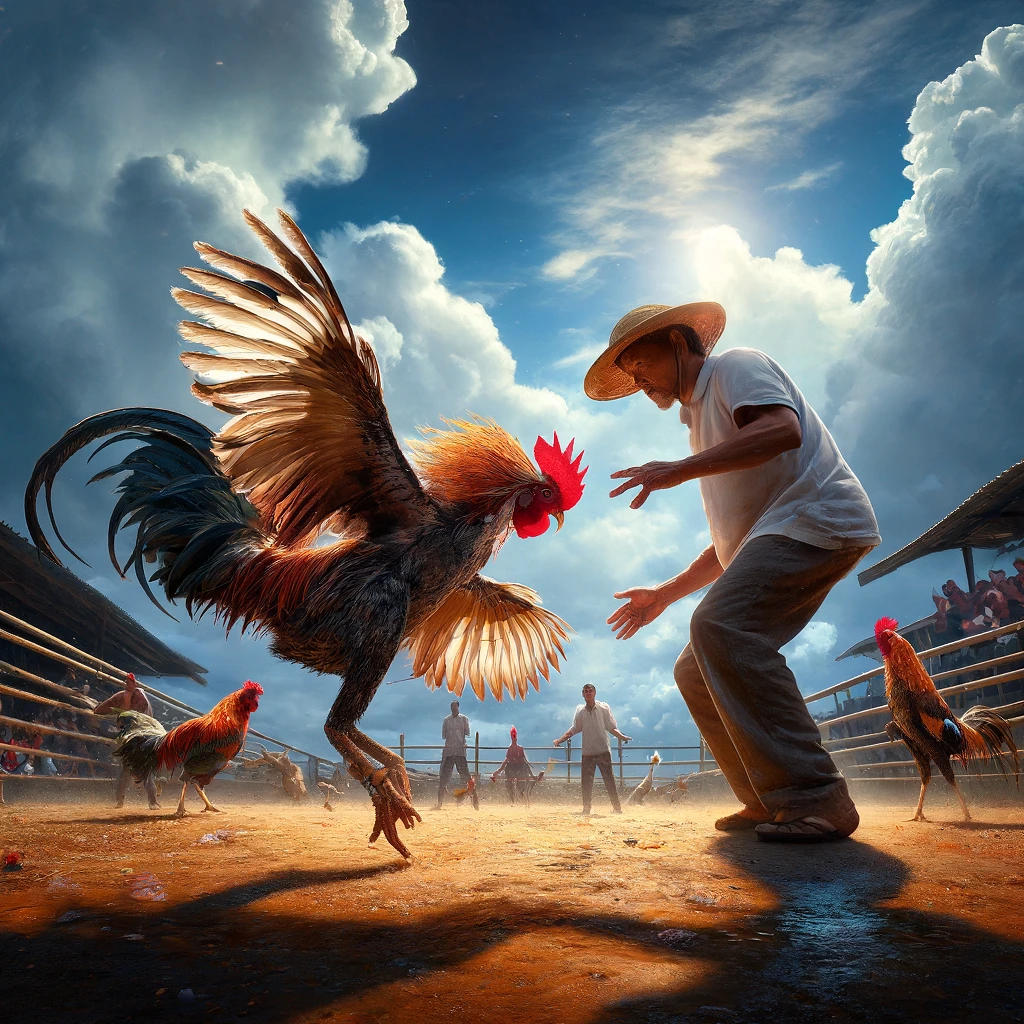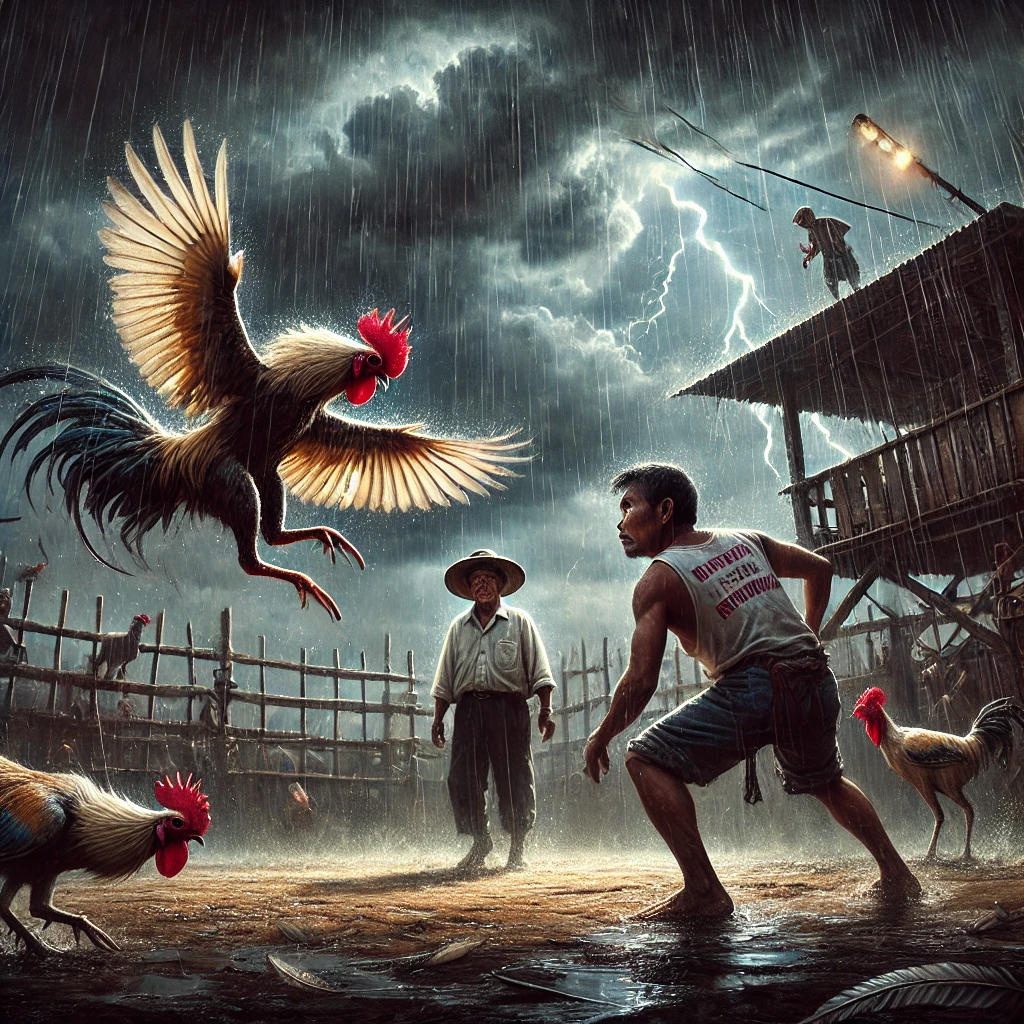Sabong referee dies after being hit in the knee by a rooster’s tail!

In Dipolog City, located in the northern region of Zamboanga, a routine sabong match—a traditional cockfighting event in the Philippines—turned into a tragedy that no one could have foreseen. Franklin, a seasoned referee with over twenty years of experience in sabong, lost his life after being struck by the razor-sharp blade attached to a fighting rooster’s leg.
Sabong is a deeply rooted cultural activity in the Philippines, blending tradition, entertainment, and betting. Matches are intense and thrilling, drawing passionate crowds who eagerly place their bets on roosters. To enhance the spectacle, the roosters’ legs are fitted with sharp blades called Tari, turning them into lethal weapons capable of inflicting deadly injuries on their opponents—or even humans. Though accidents are rare, the inherent risks of sabong became tragically evident on this fateful day.
The arena was bustling with spectators, their cheers echoing off the walls as two roosters—the sleek, black rooster and the defiant, snow-white one—were released into the pit. The tension was palpable. The black rooster wasted no time, launching itself at the white rooster with ferocious speed, its Tari flashing like a blade under the lights. It swiped downward, cutting through feathers and narrowly missing its target. The white rooster countered swiftly, leaping back and striking out with its own Tari.
The two roosters clashed repeatedly, their wings flapping furiously, blades slicing through the air, each strike carrying the potential for lethal damage. Blood began to spatter the ground as the black rooster landed a clean hit, injuring its opponent. The referee, Franklin, moved quickly to intervene, separating the roosters to ensure the match continued fairly.
But in an instant, the white rooster, now frenzied and agitated by its injuries, broke free from Franklin’s grasp. Its instincts heightened by the chaos of sabong, it turned its aggression toward Franklin. Before he could react, the white rooster leaped at him, its Tari slashing across his lower leg with shocking precision. Franklin stumbled, clutching his leg as blood poured uncontrollably onto the ground. The audience, who had been swept up in the adrenaline of sabong, froze in horrified silence.
Panic broke out as those nearby rushed to assist him. “Stop the bleeding!” someone shouted, but the deep gash caused by the Tari was more severe than anyone anticipated. Franklin’s wife, Melanie, who worked as a ticketing staff member at the arena, arrived on the scene in tears. Though bystanders tried to improvise bandages and apply pressure to the wound, the absence of medical personnel or emergency equipment made the situation dire.
Franklin was loaded into a pickup truck—there was no ambulance on standby—and rushed to the nearest hospital. Unfortunately, the massive blood loss from his severed artery had already taken its toll. Doctors later confirmed he died of hypovolemic shock caused by the extensive hemorrhage.
The tragedy of Franklin’s death sent ripples through the sabong community. Known as a dedicated referee, he had supported his family of five children through his work in sabong, demonstrating his passion for the sport despite its risks. His family, particularly his eldest son James, recalled how Franklin had sacrificed so much to provide for them. “I chose not to follow in his footsteps,” James admitted, “because I knew sabong could be dangerous. But I never imagined something like this could happen to him.”

The loss of Franklin brought renewed attention to the safety measures—or lack thereof—within sabong arenas. Though the matches are celebrated for their cultural and social significance, this incident highlighted the urgent need for better regulation and on-site medical support to prevent similar tragedies. Experts noted that some roosters, depending on their bloodline, possess an unpredictable aggressiveness during sabong. When the heat of the fight overwhelms them, they can lash out at handlers, referees, or even spectators.
Despite the tragedy, Franklin’s family remembered him as a man who deeply loved sabong and remained committed to his role, even at great personal risk. His story serves as a reminder to ensure that while sabong continues as a cherished tradition, safety must become a priority—for both participants and those who work tirelessly to make the matches possible.
[…] For Vergil, sabong is more than a livelihood—it’s a way of life. […]
[…] his father with their flock was part of daily life. Despite leaving for work in a sugar refinery, life brought him back to Sabong in 2010 when his father fell ill. Returning to rooster farming not only aided his father’s […]